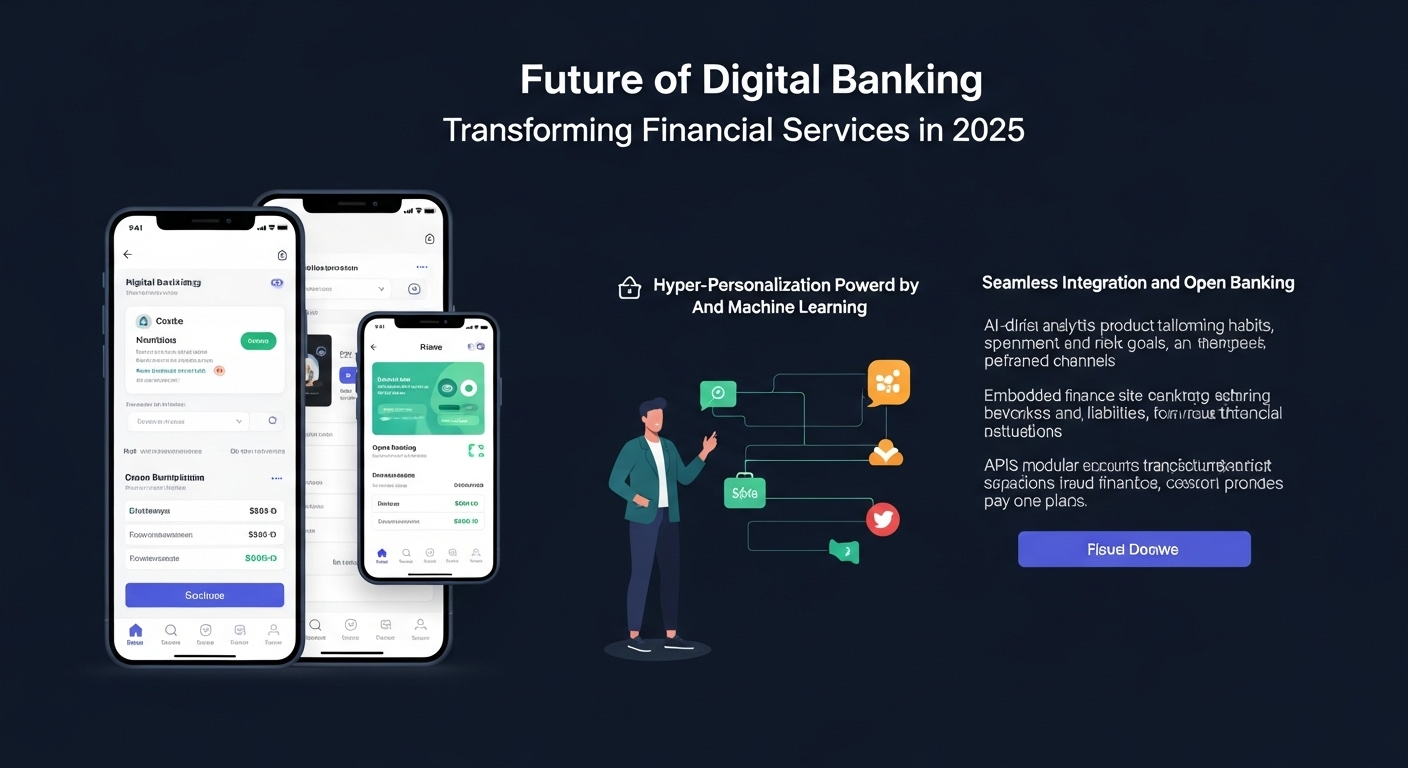
The Future of Digital Banking: Transforming Financial Services in 2025
The financial services industry is experiencing its most significant transformation since the advent of ATMs. Digital banking has evolved from a convenient alternative to traditional banking into the primary way millions of people and businesses manage their finances. As we navigate through 2025, the convergence of artificial intelligence, blockchain technology, and cloud computing is creating unprecedented opportunities for innovation in financial services.
The Rise of Neobanks and Digital-First Financial Institutions
Traditional banks, with their legacy systems and physical infrastructure, are finding it increasingly challenging to compete with agile, digital-first financial institutions. Neobanks have demonstrated that customers value speed, transparency, and user experience over physical branches and established brand names.
Key Advantages of Digital Banking Platforms:
- Real-time Processing: Instant payments, immediate account updates, and 24/7 availability
- Lower Operational Costs: Reduced overhead translates to better rates and lower fees for customers
- Enhanced User Experience: Intuitive mobile apps and web interfaces designed with user-centric principles
- Advanced Analytics: AI-powered insights help customers make better financial decisions
- Seamless Integration: APIs that connect with other financial services and business tools
The Technology Stack Powering Modern Banking
The foundation of successful digital banking lies in robust, scalable technology infrastructure. Modern banking platforms are built on cloud-native architectures that can handle millions of transactions while maintaining security and compliance standards.
Core Components Include:
- Microservices Architecture: Enabling rapid development and deployment of new features
- API-First Design: Facilitating third-party integrations and ecosystem partnerships
- Advanced Security: Multi-factor authentication, biometric verification, and real-time fraud detection
- Data Analytics: Machine learning algorithms for risk assessment and personalized services
- Regulatory Compliance: Automated compliance monitoring and reporting systems
Impact on Business Banking and SMEs
Small and medium enterprises (SMEs) are particularly benefiting from digital banking transformation. Traditional business banking often involved lengthy approval processes, extensive paperwork, and limited access to financial insights. Digital banking platforms are changing this landscape dramatically.
Benefits for Business Customers:
- Streamlined Account Opening: Digital onboarding processes that take minutes instead of weeks
- Integrated Financial Management: Combining banking, accounting, and payment processing in unified platforms
- Access to Credit: AI-driven credit scoring enables faster loan approvals for qualified businesses
- Cash Flow Management: Real-time visibility into financial positions and predictive analytics
- Global Reach: Cross-border payments and multi-currency support for international businesses
The Role of Artificial Intelligence in Financial Services
AI is not just a buzzword in banking; it’s becoming the backbone of modern financial services. From chatbots handling customer inquiries to sophisticated algorithms detecting fraudulent transactions, AI is enhancing every aspect of the banking experience.
AI Applications in Banking:
- Personalized Financial Advice: AI advisors that analyze spending patterns and suggest optimization strategies
- Risk Assessment: Advanced algorithms that evaluate creditworthiness using alternative data sources
- Fraud Prevention: Real-time transaction monitoring that identifies suspicious activities instantly
- Customer Service: Intelligent chatbots that resolve queries and guide users through complex processes
- Regulatory Compliance: Automated monitoring systems that ensure adherence to financial regulations
Challenges and Considerations
While digital transformation offers tremendous opportunities, it also presents unique challenges that financial institutions must navigate carefully.
Key Challenges:
- Cybersecurity: Protecting sensitive financial data from increasingly sophisticated threats
- Regulatory Compliance: Adapting to evolving regulations across different jurisdictions
- Customer Trust: Building confidence in digital-only financial services
- Technical Debt: Modernizing legacy systems without disrupting existing operations
- Talent Acquisition: Finding skilled professionals who understand both finance and technology
Looking Ahead: The Next Decade of Digital Banking
The future of banking will be characterized by even greater integration of emerging technologies. We can expect to see:
- Embedded Finance: Banking services integrated directly into e-commerce platforms and business applications
- Blockchain Integration: Improved transparency and security through distributed ledger technology
- Open Banking Evolution: Expanded data sharing and collaboration between financial institutions
- Sustainable Finance: Digital tools that help customers and businesses make environmentally conscious financial decisions
- Quantum Computing: Enhanced security and processing capabilities for complex financial calculations
Conclusion
Digital transformation in banking is not just about technology; it’s about reimagining how financial services can better serve customers in an increasingly connected world. Organizations that embrace this transformation while maintaining focus on security, compliance, and customer experience will be best positioned to thrive in the digital economy.
The journey toward fully digital banking is ongoing, and the institutions that succeed will be those that view technology not as a replacement for human expertise, but as a tool to enhance and amplify the value they provide to their customers.
As we continue to witness this transformation, one thing is clear: the future of banking is digital, and that future is now.